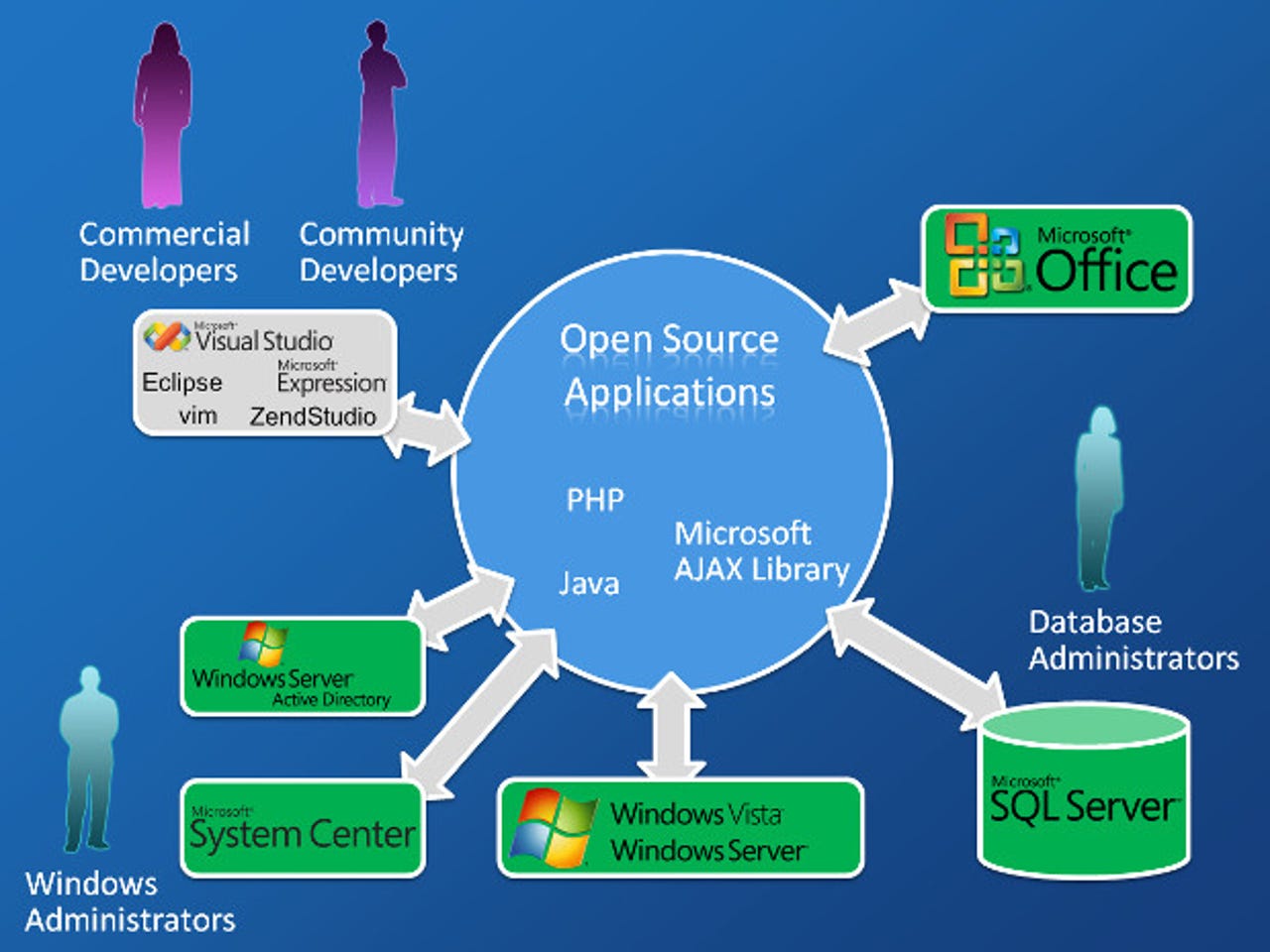Why Microsoft loves Linux

Some things don't go together: Cats and dogs, New York Yankee and Boston Red Sox fans, Linux and Windows... or do they? In San Francisco, Microsoft CEO Satya Nadella said, and I quote, "Microsoft loves Linux."

Wow.
That's a heck of a long way from Steve Ballmer proclaiming back in 2001 that "Linux is a cancer." In the years since then Microsoft certainly attacked Linux like it was a cancer — doing everything from sponsoring SCO's copyright attack on Linux to claiming that Linux violated unnamed Microsoft patents to endless FUD assaults.
So, how did we get from Linux as Microsoft enemy number one to "love"?
Nadella actually told us the heart of the story, which I can boil down to that classic detective approach: "Follow the money."
Nadella told Wired that he's not interested in fighting old battles — especially, when, like it or not, Linux has become a vital part of today's business technology. "If you don’t jump on the new,” he said, you don’t survive."
There's nothing new about Linux, which at 22 is old enough to drink. But two things are new: First, Microsoft's fortunes now lie not with the desktop or desktop programs, but with its Azure cloud and cloud-based programs such as Office 365. Second, Linux, even on the Azure cloud, is used by businesses large and small.
Indeed, Nadella admitted that 20 percent of the operating systems on Azure are Linux. The open-source operating system is already contributing a lot to Microsoft's bottom line. Today, Azure — while it doesn't support the top business Linux, Red Hat Enterprise Linux (RHEL) — already supports CoreOS Linux, CentOS, Oracle Linux, SUSE, and Ubuntu on Azure.
Tech Pro Research
At the same time, Microsoft is acutely aware that Azure is the only purely proprietary cloud out here. All its competition — Amazon Web Services, Google Compute, OpenStack, etc., etc. — all run on Linux and offer Linux server services. Had Microsoft insisted on the Windows way or the highway, they wouldn't stand a chance.
It's not just Linux that Microsoft loves. After decades of resistance, Microsoft supports a variety of open-source programs such as the big data Hadoop; Docker containers; and Facebook's Open Compute datacenter project. Indeed, Microsoft is even open-sourcing more of its own technologies such as parts of .Net.
Microsoft, of course, also makes money directly from Linux. Its Android patents, questionable as they may be, still provide a billion dollars more in profits than does Windows Phone.
If you watched closely, you could see Microsoft starting to change its anti-Linux tune years ago.
As far back as 2008, Sam Ramji, then Microsoft's director of platform technology strategy and the company's Open Source Software Lab, said "The Microsoft open-source strategy is focused on helping customers and partners be successful in today's heterogeneous technology world."
You might have thought that was Microsoft just blowing smoke. Then, Microsoft started showing it wasn't just talking the talk, it was also walking the walk when it came to open-source development.
By 2011, Microsoft had become the fifth largest code contributor to the Linux kernel. What were they doing? Making sure Linux could work with Microsoft's Hyper-V virtualization. Hyper-V lies at the heart of Azure.
You see, it's not so much Linux and open source per se that Microsoft has a crush on. It's that, in 2014, the world is leaving the old desktop/application computing paradigm for a device/cloud services approach. Microsoft ruled the former; however, to continue to be a contender in the later, it's realized that it needs to work and play well with others. Yes, even Linux.
Related Stories:
- Survey indicates four out of five developers now use open source
- Docker CTO: Why Microsoft's Docker plans for Windows will matter to you
- Microsoft's Q1 shines; Office 365 leads results
- Microsoft open sources more of its .Net technologies
- Microsoft still open sources more technologies than many think